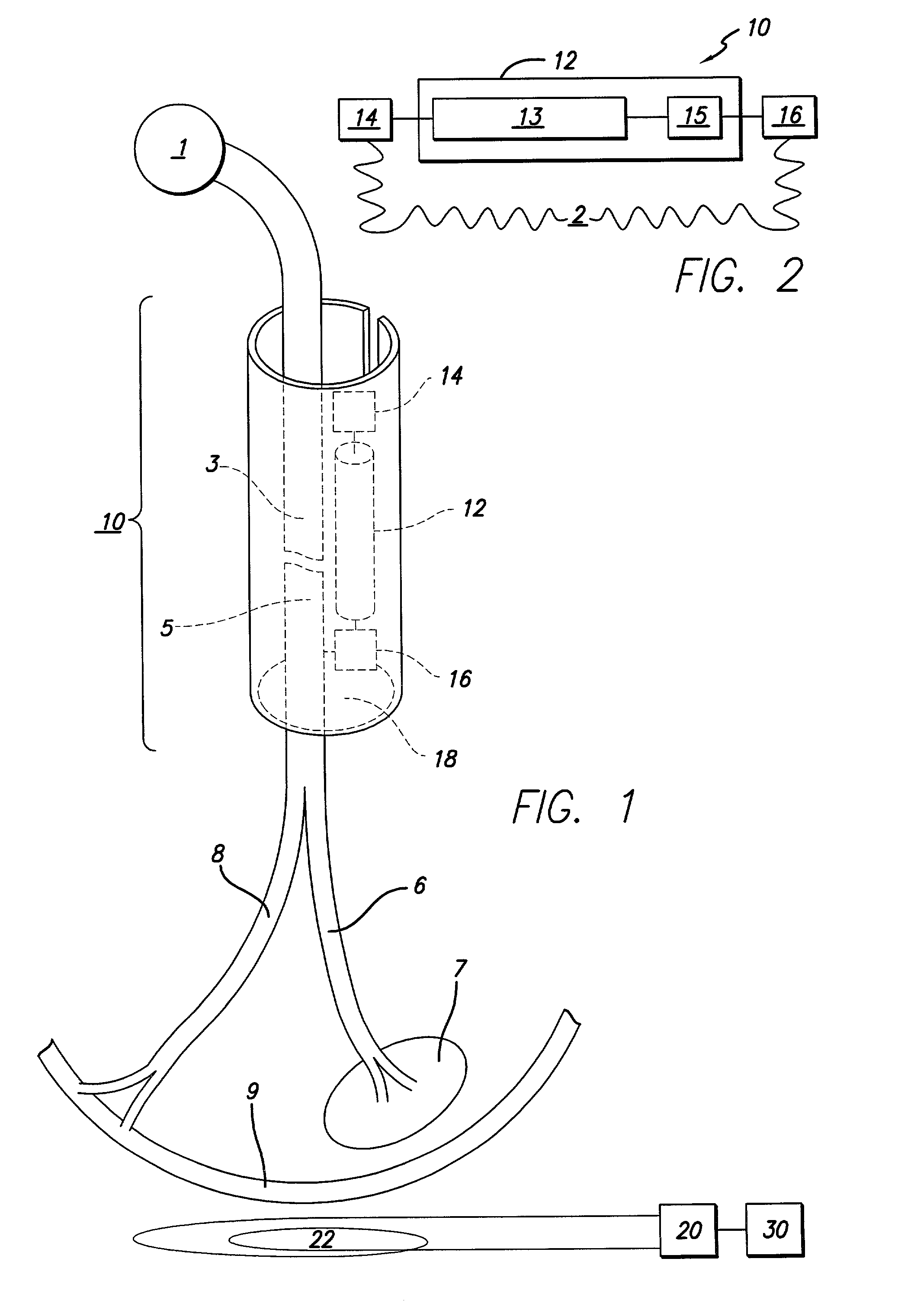System and method for providing recovery from muscle denervation
a technology of muscle denervation and recovery method, applied in the field of biomedical devices, can solve the problems of ineffective synapses, slow recovery of motor function, and inconvenient connection,
- Summary
- Abstract
- Description
- Claims
- Application Information
AI Technical Summary
Problems solved by technology
Method used
Image
Examples
Embodiment Construction
[0032] The present invention provides a device capable of delivering therapeutic levels of electrical stimulation to a damaged nerve site. The device can be implanted within the body at the site of surgical repair for a damaged nerve. This minimizes any additional surgery that would be required to implant the stimulation circuitry and associated leads and electrodes, such as with other types of devices. A fully implantable stimulation device also minimizes potential damage to the nerve from infection or traction that may occur with percutaneous wire leads. Additionally, an implantable device of the present invention is also advantageous in that it can be used to provide controlled, accurate and reproducible stimulation throughout the period of nerve regeneration and functional recovery.
[0033] In one embodiment, an implantable electrical stimulator suitable for use in the present invention can be of the BION.TM. microstimulator type, also developed by the inventor of the present appl...
PUM
 Login to View More
Login to View More Abstract
Description
Claims
Application Information
 Login to View More
Login to View More - R&D
- Intellectual Property
- Life Sciences
- Materials
- Tech Scout
- Unparalleled Data Quality
- Higher Quality Content
- 60% Fewer Hallucinations
Browse by: Latest US Patents, China's latest patents, Technical Efficacy Thesaurus, Application Domain, Technology Topic, Popular Technical Reports.
© 2025 PatSnap. All rights reserved.Legal|Privacy policy|Modern Slavery Act Transparency Statement|Sitemap|About US| Contact US: help@patsnap.com


